I experimented with approximating the contour with polylines using approxPolyDP. When the shape is closed, this is simple and always produce a good approximation. But when the shape is open, like the sample image in question, sometimes the ordering of approximated points is not maintained (I've given an example of this below). It's difficult to describe every detail of the approach, so I've commented the c++ code as best as I can. Hope this helps.
Gradient direction at polyline approximated points (red dots are polyline approx. points offset by some amount in the opposite gradient direction, and blue dots are in gradient direction):

Final approximated points (a point within a red blob) and order of navigation (blue arrows)

Example shapes and gradient directions. Note the difference between closed and open shapes. For the closed shape, the red dots are all located to one side of the stroke. For open shapes, red dots are located on both sides of the stroke.

Shape on the top left gets the order of navigation wrong because the contour doesn't start from a tip of the shape. However, it does a good pointwise approximation.

int _tmain(int argc, _TCHAR* argv[])
{
Mat im = imread("1.png", 0);
Mat roi = Mat::zeros(im.size(), CV_8UC1);
/* find the gradient at every point */
Mat dx, dy;
Sobel(im, dx, CV_32F, 1, 0, 7);
Sobel(im, dy, CV_32F, 0, 1, 7);
/* take the distance transform */
Mat dist;
distanceTransform(im, dist, CV_DIST_L2, 5);
/* max stroke radius */
double th;
minMaxLoc(dist, NULL, &th);
/* for display/debug purposes */
Mat rgb = Mat::zeros(im.size(), CV_8UC3);
Mat rgb2;
cvtColor(im, rgb2, CV_GRAY2BGR);
Mat rgb3 = Mat::zeros(im.size(), CV_8UC3);
Mat tmp = im.clone();
// find contours, get every point with CV_CHAIN_APPROX_NONE
vector<vector<Point>> contours;
vector<Vec4i> hierarchy;
findContours(tmp, contours, hierarchy, CV_RETR_CCOMP, CV_CHAIN_APPROX_NONE, Point(0, 0));
for(int idx = 0; idx >= 0; idx = hierarchy[idx][0])
{
/* draw contours */
drawContours(rgb, contours, idx, Scalar(0, 255, 255), 2, 8);
drawContours(rgb2, contours, idx, Scalar(0, 255, 255), 1, 8);
drawContours(rgb3, contours, idx, Scalar(0, 255, 255), 1, 8);
/* polyline approximztion of the contour */
vector<Point> poly;
approxPolyDP(contours[idx], poly, th, false);
/*
now we'll sample the gradient along the points in the polyline,
find another opposite point in the coitour in the gradient direction,
then find the peak location in the distance image (looks like the
mid point should also work, but I didn't try it).
*/
for (Point& pt: poly)
{
/* sample dx, dy at our point of interest */
float x = dx.at<float>(pt);
float y = dy.at<float>(pt);
float n = sqrtf(x*x + y*y);
/*
select another point in the direction of the gradient that intersects the stroke:
by choosing a point that's around 2.5 times the max stroke radius, we hope
to cross the stroke with this line
*/
Point pt2(pt.x + 2.5*th*x/n, pt.y + 2.5*th*y/n);
/* offset the first point a bit in the opposite gradient direction */
Point pt1(pt.x - .5*th*x/n, pt.y - .5*th*y/n);
/* draw a thick line */
line(roi, pt1, pt2, Scalar(255, 255, 255), 2, 8);
/*
display the points
*/
line(rgb3, pt1, pt2, Scalar(255, 255, 255), 2, 8);
line(rgb2, pt1, pt2, Scalar(0, 255, 255), 2, CV_AA);
circle(rgb2, pt1, 3, Scalar(0, 0, 255), -1, CV_AA);
circle(rgb2, pt2, 3, Scalar(255, 0, 0), -1, CV_AA);
}
/* dilate the lines so that nearby lines can merge */
Mat kernel = getStructuringElement(MORPH_ELLIPSE, Size(3, 3));
morphologyEx(roi, roi, CV_MOP_DILATE, kernel, Point(-1, -1), 1);
/* only for debug */
morphologyEx(rgb3, rgb3, CV_MOP_DILATE, kernel, Point(-1, -1), 1);
/* we are interested in lines segments that are within the shape */
roi &= im;
/* collect all these line segments */
vector<vector<Point>> regions;
findContours(roi, regions, CV_RETR_CCOMP, CV_CHAIN_APPROX_SIMPLE, Point(0, 0));
/*
now that we have all the info about lines segments,
we can use the image for other purposes such as a mask
*/
roi.setTo(Scalar(0, 0, 0));
/* our points of interest when we approximate the shape */
vector<Point> shapeApprox;
/*
for each point on the shape contour, see if it is within a line segment
that we found using gradients. if so, find the peak location from the distance image.
it is a point in the skeleton
*/
for (Point& pt: contours[idx])
{
for (size_t i = 0; i < regions.size(); i++)
{
if (-1 != pointPolygonTest(regions[i], pt, false))
{
/* using roi as a mask to find the peak location from distance image */
drawContours(roi, regions, i, Scalar(255, 255, 255), -1);
double mx;
Point mxLoc;
minMaxLoc(dist, NULL, &mx, NULL, &mxLoc, roi);
/*
if this point is not already in the list, add it.
as the gradient line can intersect the shape contour at two
points most of the time, we'll find the same peak twice
*/
if (shapeApprox.end() == find(shapeApprox.begin(), shapeApprox.end(), mxLoc))
{
//cout << mx << " @ " << mxLoc << endl;
shapeApprox.push_back(mxLoc);
}
/* no need to test other gradient lines */
break;
}
}
/* reset the mask */
roi.setTo(Scalar(0, 0, 0));
}
/* draw the (possibly merged) gradient line segments */
drawContours(rgb, regions, -1, Scalar(0, 0, 255), -1);
/* draw the shape approximation */
for (size_t i = 1; i < shapeApprox.size(); i++)
{
arrowedLine(rgb, shapeApprox[i-1], shapeApprox[i], Scalar(255, 0, 0), 2, CV_AA, 0, .1);
//imshow("approx", rgb);
//waitKey(0);
}
}
imshow("debug", rgb3);
imshow("points", rgb2);
imshow("approx", rgb);
waitKey(0);
return 0;
}


![[1]: https://i.stack.imgur.com/1IA](../../images/3812559972.webp)




